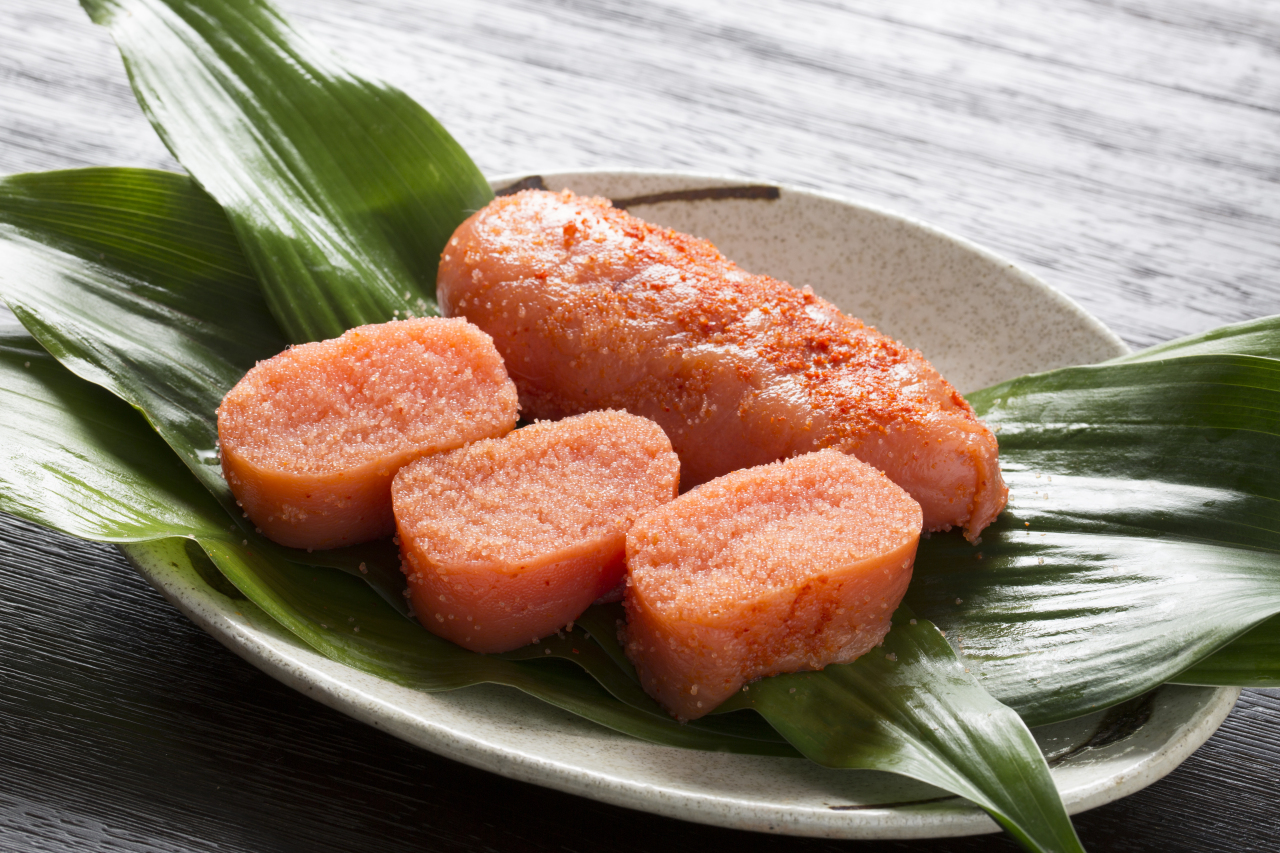
BUSAN -- Busan is one of the cities to head to if you are looking to feast on fresh seafood, but the city also has great know-how about preserving seafood to be enjoyed later.
Myeongnan, or pollack roe, is a popular side dish that is often also called “bap doduk,” meaning rice thief. Bap doduk is a moniker used for side dishes that have you eating more rice than usual because the combination is so tasty.
While there is a misconception that myeongnan originates from Japan’s mentaiko, the real story of myeongnan began at Namseon Warehouse, Busan’s first warehouse founded in the early 1900s in the city’s Choryang-dong, Dong-gu.
The warehouse was built to handle seafood caught and harvested in the southern part of the Korean Peninsula. However, it gradually became a storage facility primarily for pollack caught in large amounts off the southern coast of the country at the time.
A Japanese businessman in Busan at the time, Toshio Kawahara, fell deeply in love with the taste of myeongnan kimchi sold in Choryang-dong’s markets. Kawahara made a plan to introduce the unique and savory flavor of Busan’s salted pollack roe to Japan, and in 1948 he established Fukuya, which remains Japan’s leading mentaiko brand today.
For several years, the Dong-gu local office has been trying to revive the history of Choryang-dong as the hometown of myeongnan.
The neighborhood renamed one of its main roads on the hillside Choryang Myeongnan Road. After more than a year of planning, the neighborhood has been transformed into an area with local exhibitions, gift shops, cafes, restaurants and a cooking complex that all center on myeongnan.
Myeongnan is typically served three different ways -- drizzled with sesame oil and topped with chopped green onion and sesame seed as garnish; grilled and served on top of a bowl of rice; or served in a soup.
There are numerous eateries in Busan where myeongnan is the star. Here are three.
Myeongnan, or pollack roe, is a popular side dish that is often also called “bap doduk,” meaning rice thief. Bap doduk is a moniker used for side dishes that have you eating more rice than usual because the combination is so tasty.
While there is a misconception that myeongnan originates from Japan’s mentaiko, the real story of myeongnan began at Namseon Warehouse, Busan’s first warehouse founded in the early 1900s in the city’s Choryang-dong, Dong-gu.
The warehouse was built to handle seafood caught and harvested in the southern part of the Korean Peninsula. However, it gradually became a storage facility primarily for pollack caught in large amounts off the southern coast of the country at the time.
A Japanese businessman in Busan at the time, Toshio Kawahara, fell deeply in love with the taste of myeongnan kimchi sold in Choryang-dong’s markets. Kawahara made a plan to introduce the unique and savory flavor of Busan’s salted pollack roe to Japan, and in 1948 he established Fukuya, which remains Japan’s leading mentaiko brand today.
For several years, the Dong-gu local office has been trying to revive the history of Choryang-dong as the hometown of myeongnan.
The neighborhood renamed one of its main roads on the hillside Choryang Myeongnan Road. After more than a year of planning, the neighborhood has been transformed into an area with local exhibitions, gift shops, cafes, restaurants and a cooking complex that all center on myeongnan.
Myeongnan is typically served three different ways -- drizzled with sesame oil and topped with chopped green onion and sesame seed as garnish; grilled and served on top of a bowl of rice; or served in a soup.
There are numerous eateries in Busan where myeongnan is the star. Here are three.
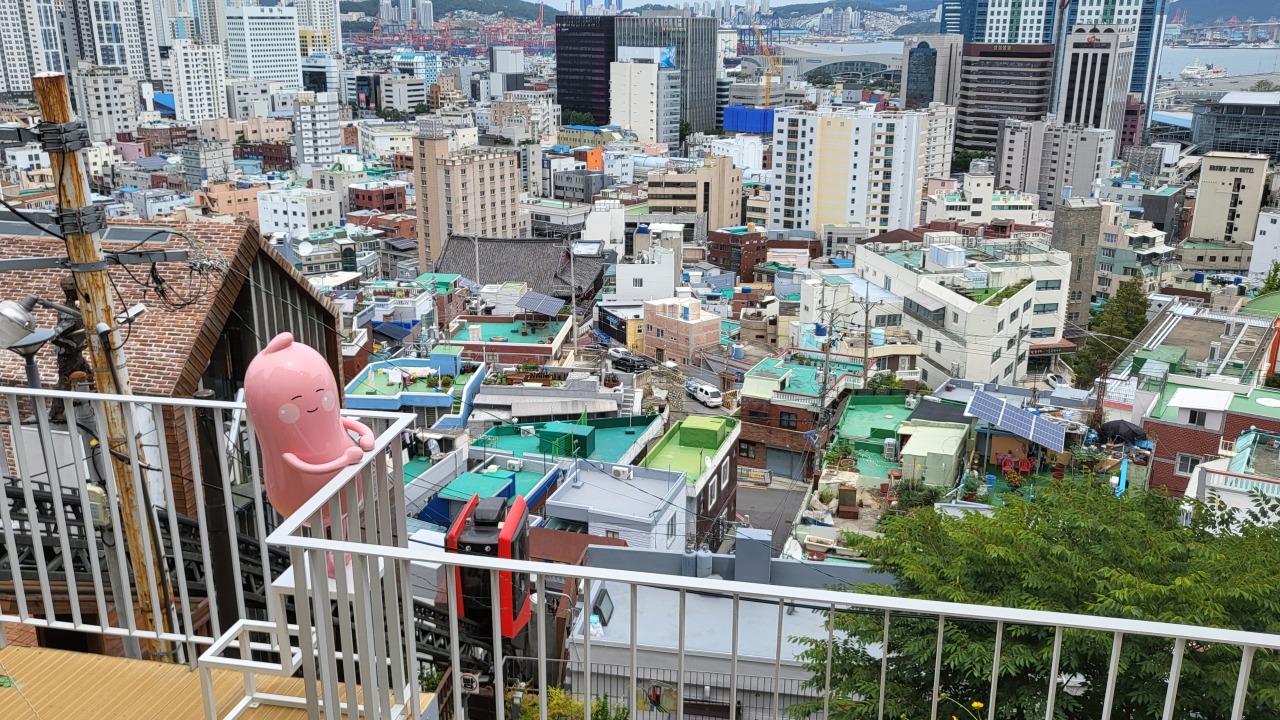
Myeongnan Brand Lab
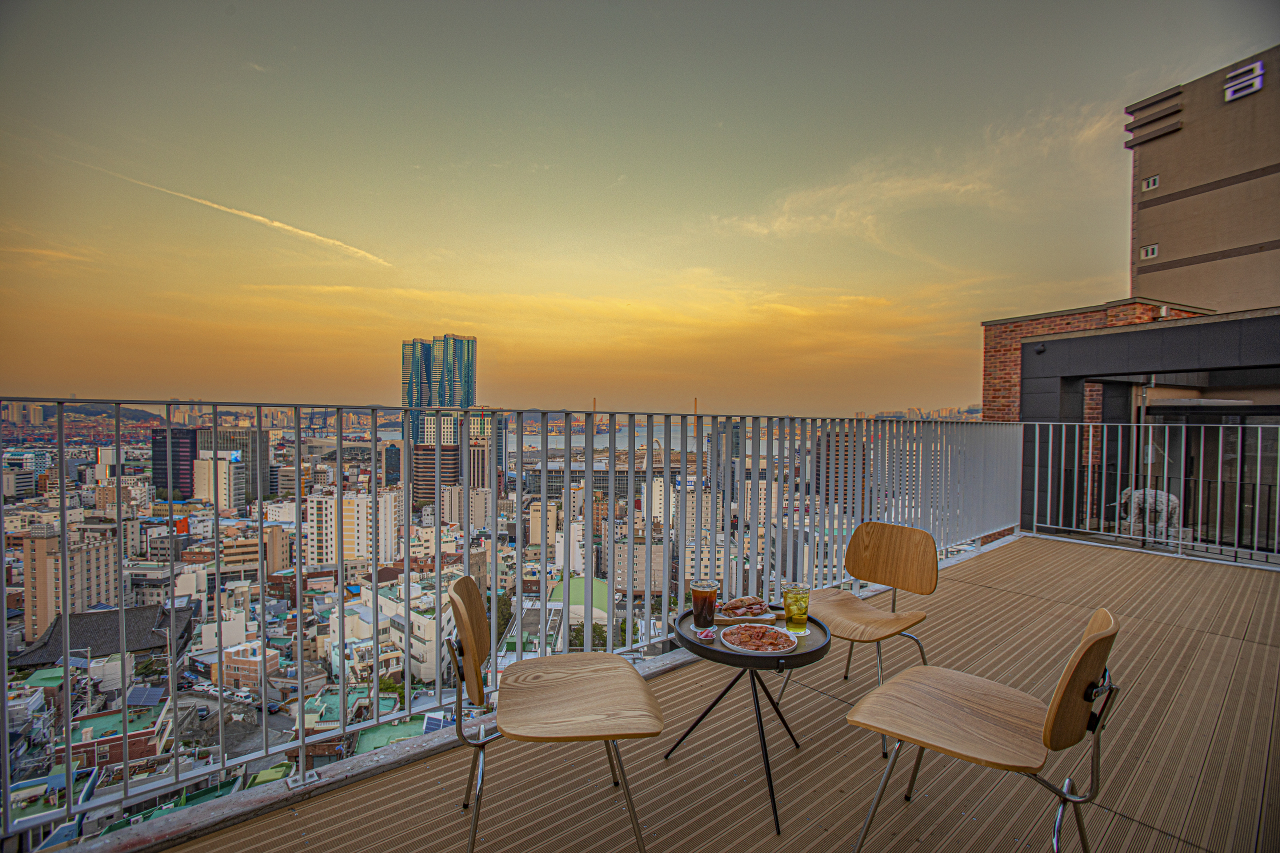
Having just opened in December, Myeongnan Brand Laboratory is located on a steep alley in Dong-gu at the end of a monorail line.
The staff here are area residents who came up with the eight different myeongnan-themed dishes in consultation with chefs.
The restaurant’s signature dish is myeongnan jokbal, pig’s trotters seasoned and dipped in mildly spicy myeongnan sauce. You can feel the pollack roe popping in your mouth as you enjoy the chewy pig’s trotters.
The staff here are area residents who came up with the eight different myeongnan-themed dishes in consultation with chefs.
The restaurant’s signature dish is myeongnan jokbal, pig’s trotters seasoned and dipped in mildly spicy myeongnan sauce. You can feel the pollack roe popping in your mouth as you enjoy the chewy pig’s trotters.
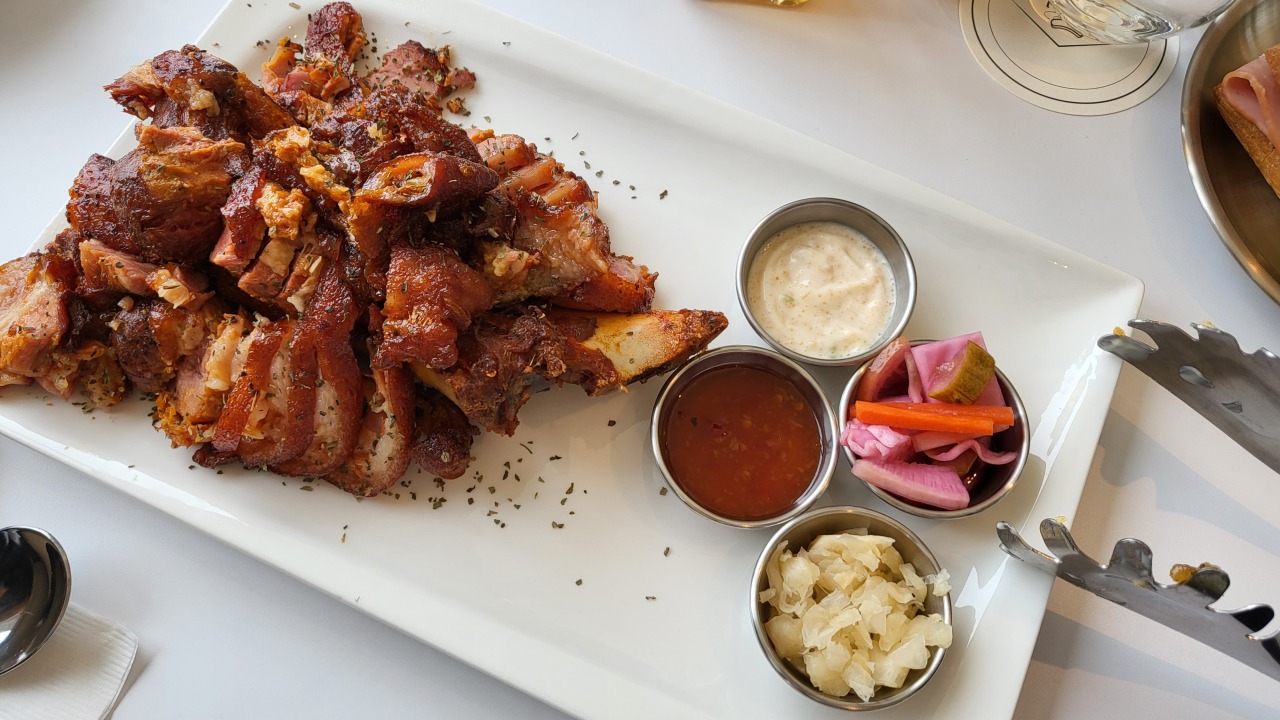
The myeongnan spread in the myeongnan beurre, a ciabatta sandwich, is similar in taste to mayonnaise, but has a savory and salty finish that goes well with the fresh greens in the sandwich.
Another favorite at the restaurant is myeongnan pongdang, grilled myeongnan and cheese with myeongnan soup, which resembles a fondue dish.
A small permanent exhibition hall a few steps down from Myeongnan Brand Lab introduces the history of myeongnan. Boxes of myeongnan-jeot, or salted pollack roe, can be purchased here.
Ibagu Chungjeonso
Another favorite at the restaurant is myeongnan pongdang, grilled myeongnan and cheese with myeongnan soup, which resembles a fondue dish.
A small permanent exhibition hall a few steps down from Myeongnan Brand Lab introduces the history of myeongnan. Boxes of myeongnan-jeot, or salted pollack roe, can be purchased here.
Ibagu Chungjeonso
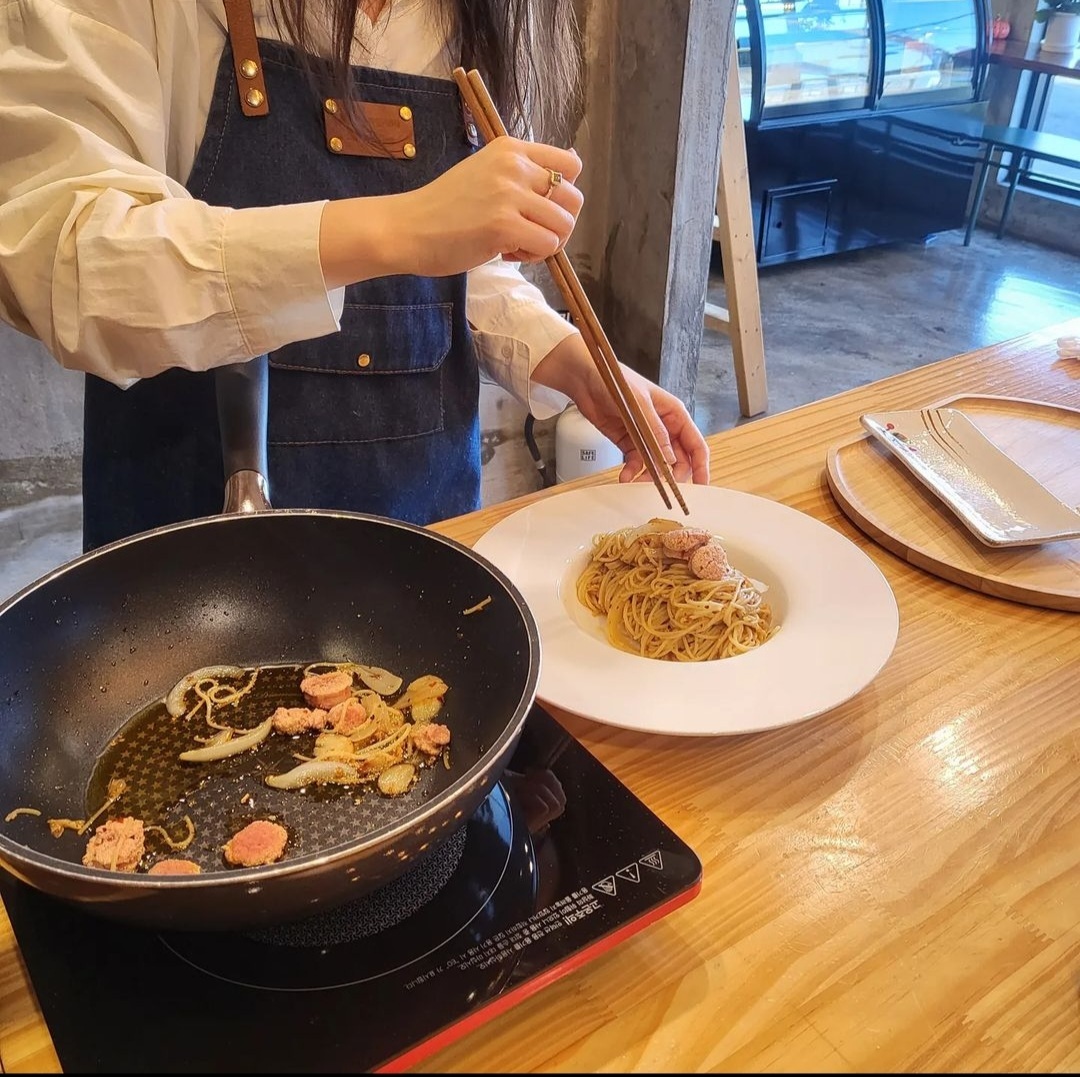
A short walk across the street from Myeongnan Brand Lab, Ibagu Chungjeonso offers cooking classes where you can learn to make myeongnan pasta.
You can choose from two kinds of pasta -- oil or cream-based -- and follow the guide’s instructions. During the 70-minute class, the lecturer will also explain myeongnan’s history, how to store it properly and different ways to cook it.
“Although lecturers can speak only basic English, we are very excited when foreign guests come to our cooking class,” a staff member at Ibagu Chungjeonso told The Korea Herald. “Food and cooking is a universal thing, and foreigners are often expert cooks themselves, so we also learn from them.”
You can choose from two kinds of pasta -- oil or cream-based -- and follow the guide’s instructions. During the 70-minute class, the lecturer will also explain myeongnan’s history, how to store it properly and different ways to cook it.
“Although lecturers can speak only basic English, we are very excited when foreign guests come to our cooking class,” a staff member at Ibagu Chungjeonso told The Korea Herald. “Food and cooking is a universal thing, and foreigners are often expert cooks themselves, so we also learn from them.”
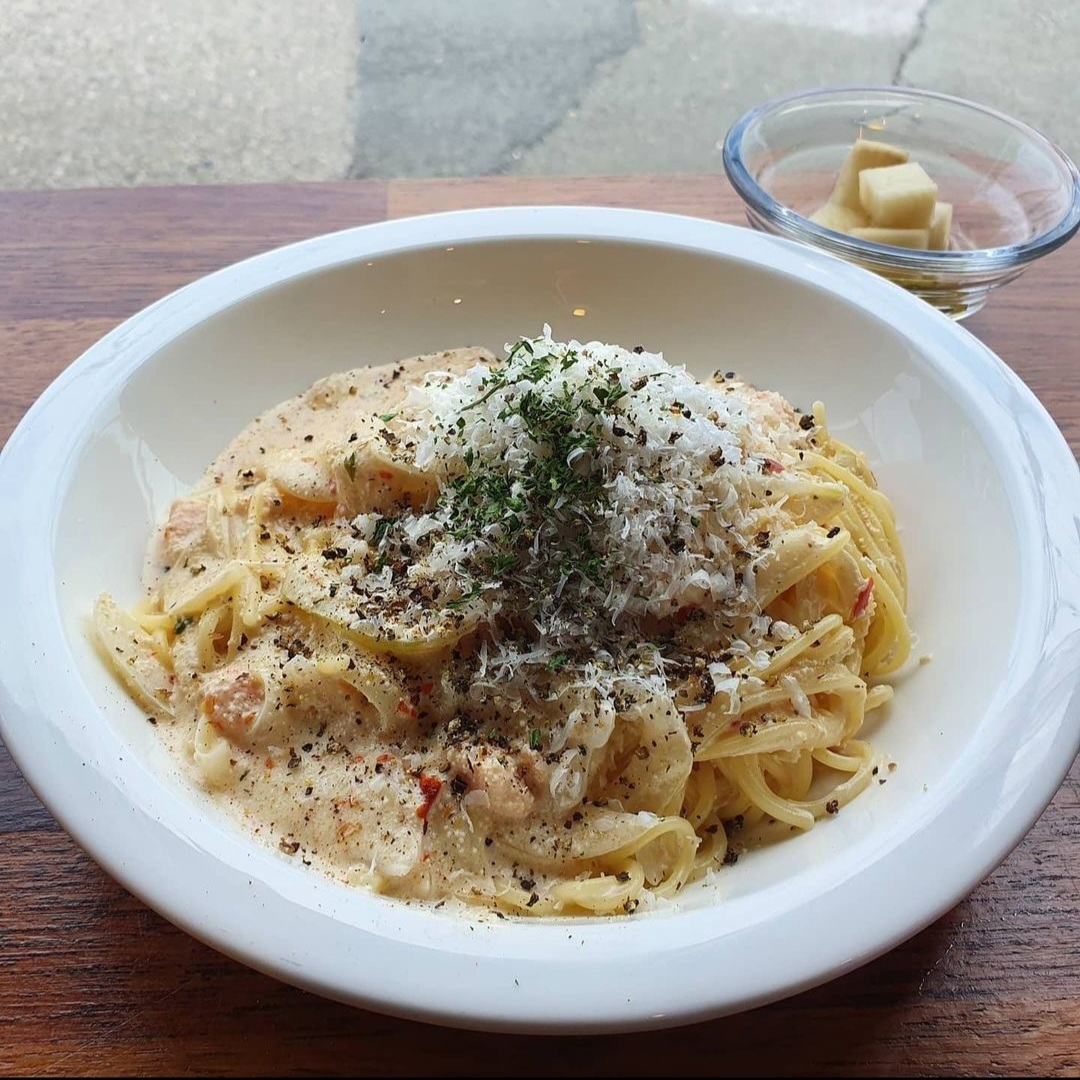
Reservations are necessary. Participants will find all the ingredients and cooking utensils ready upon arrival. Classes cost 17,000 won per person, and up to four people can take part in each session.
Reservations and inquiries can be made at the Busan Bus Tour website or Ibagu Chungjeonso’s Instagram page.
Busan Aljjim
Reservations and inquiries can be made at the Busan Bus Tour website or Ibagu Chungjeonso’s Instagram page.
Busan Aljjim
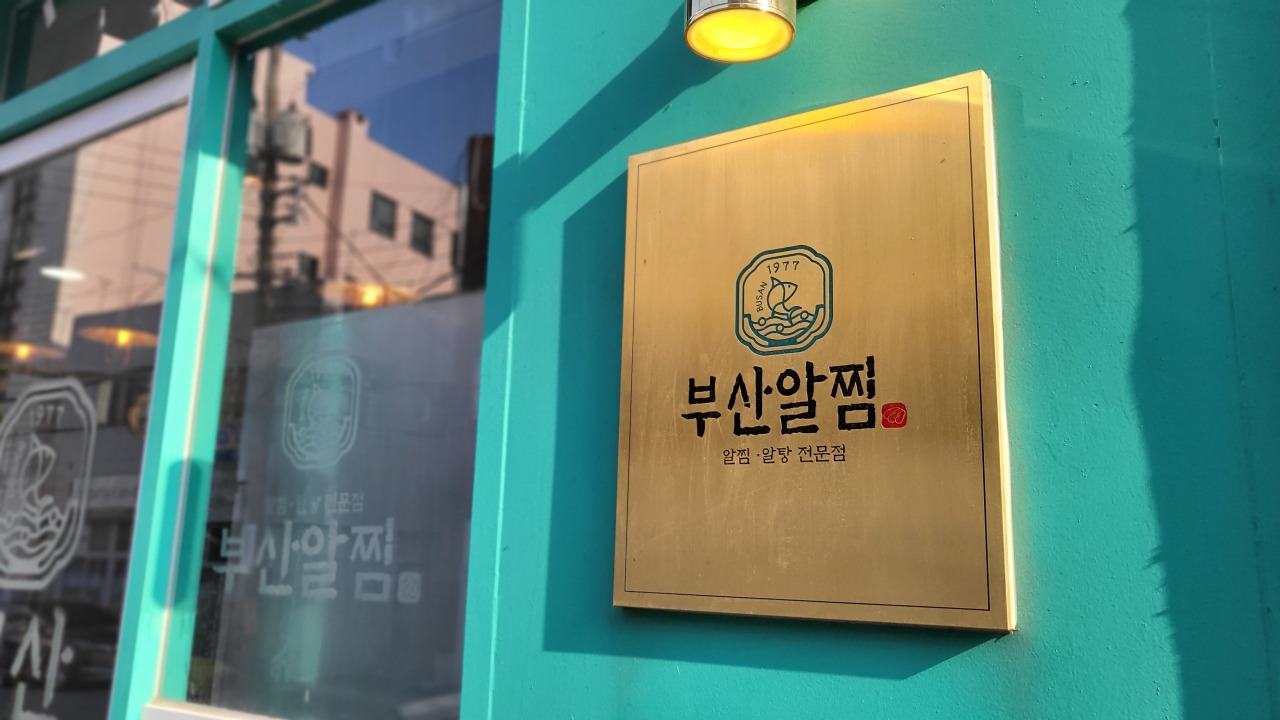
Located about a two-minute walk from Busan’s Minam Station Exit No. 12, Busan Aljjim has received glowing online reviews for its myeongnantang.
Diners can be assured of the quality of their seafood as the restaurant is owned by Taegeum Soosan, a fisheries distributor in the city.
The Busan altang that you see on the menu is the restaurant’s fancy version of myeongnantang. There are three spice levels to choose from: mild, moderate and very spicy.
Busan cuisine tends to be spicy, so ordering the mild or moderate level is advisable.
The Busan altang consists of boiled myeongnan, clams, mushrooms, crown daisies, green onions, red pepper and bean sprouts.
Diners can be assured of the quality of their seafood as the restaurant is owned by Taegeum Soosan, a fisheries distributor in the city.
The Busan altang that you see on the menu is the restaurant’s fancy version of myeongnantang. There are three spice levels to choose from: mild, moderate and very spicy.
Busan cuisine tends to be spicy, so ordering the mild or moderate level is advisable.
The Busan altang consists of boiled myeongnan, clams, mushrooms, crown daisies, green onions, red pepper and bean sprouts.
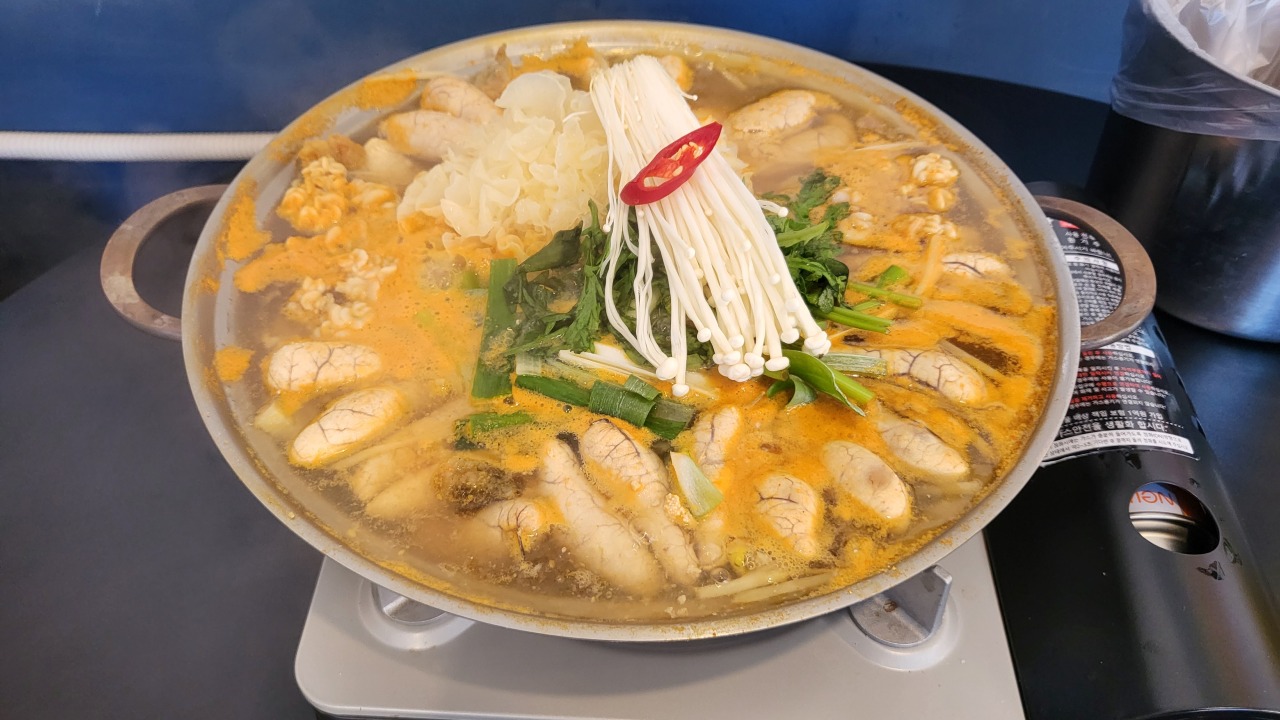
First, have the hot soup with a bowl of rice. You can also enjoy it by adding ramen noodles to the boiling soup.
A small pot can be shared by two to three people for 29,000 won. A large pot costs 49,000 won. You can also order additional boiled myeongnan for 5,000 won.
By Kim Hae-yeon (hykim@heraldcorp.com)
A small pot can be shared by two to three people for 29,000 won. A large pot costs 49,000 won. You can also order additional boiled myeongnan for 5,000 won.
By Kim Hae-yeon (hykim@heraldcorp.com)








![[KH Explains] How should Korea adjust its trade defenses against Chinese EVs?](http://res.heraldm.com/phpwas/restmb_idxmake.php?idx=644&simg=/content/image/2024/04/15/20240415050562_0.jpg&u=20240415144419)











![[Today’s K-pop] Stray Kids to return soon: report](http://res.heraldm.com/phpwas/restmb_idxmake.php?idx=642&simg=/content/image/2024/04/16/20240416050713_0.jpg&u=)